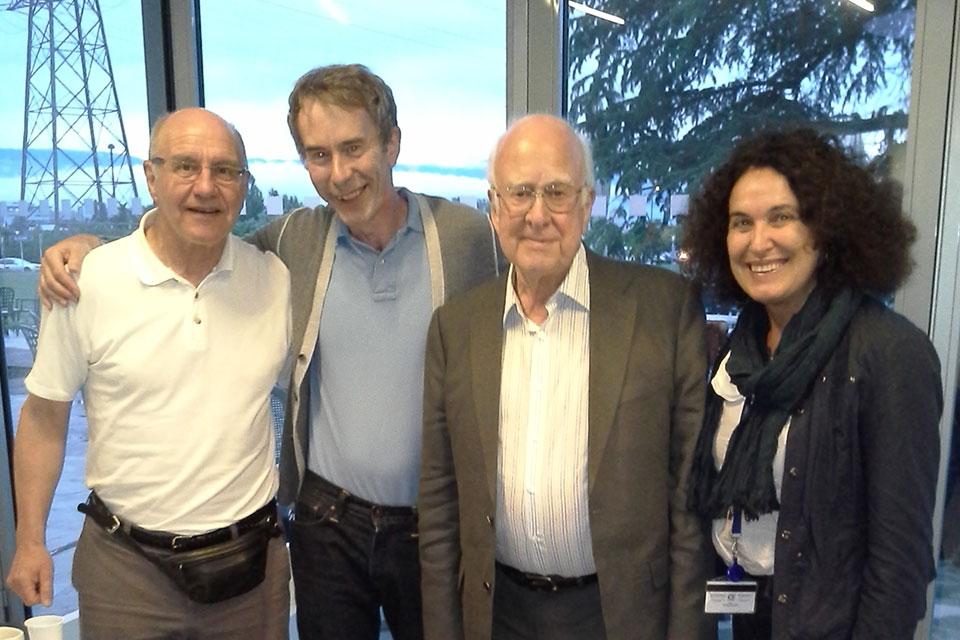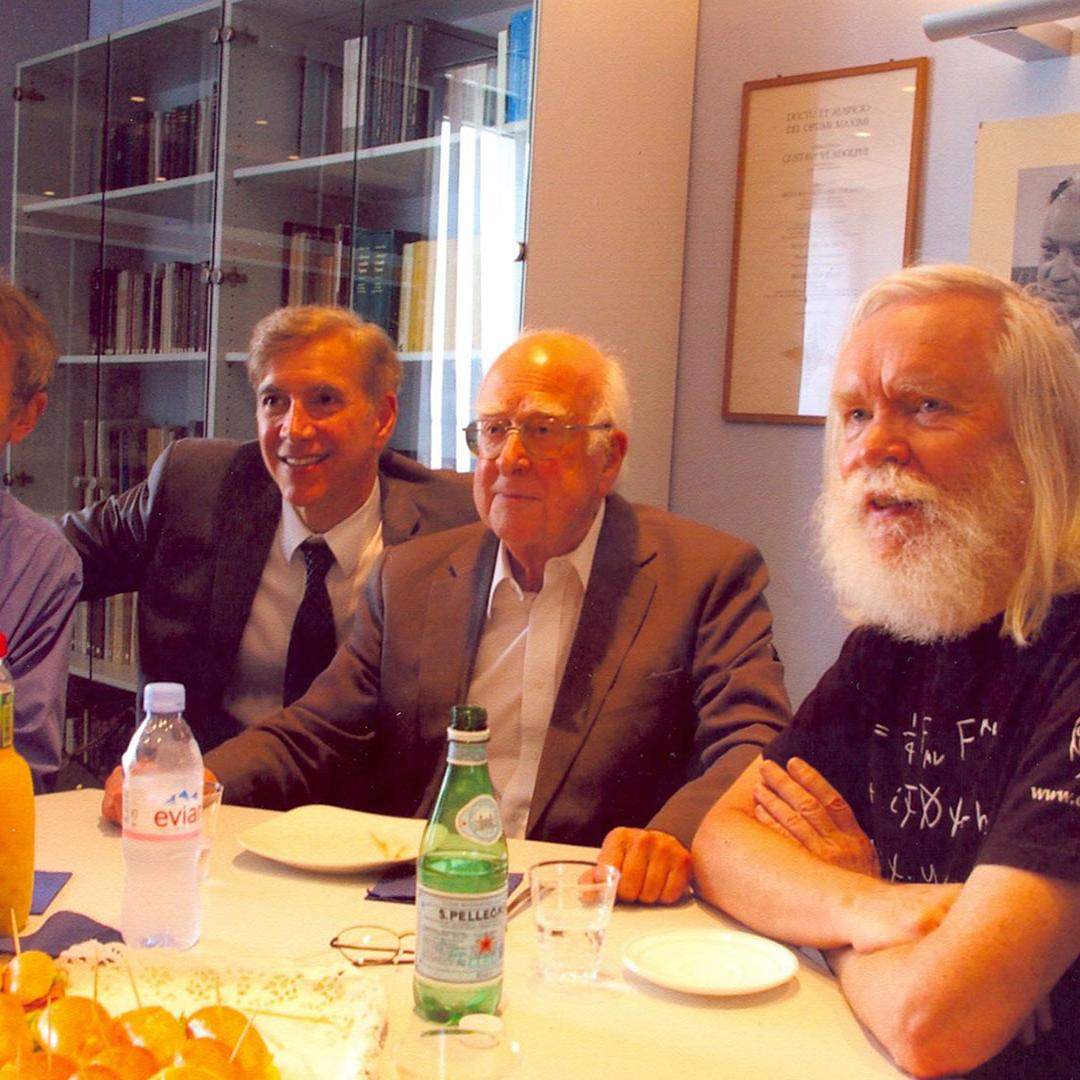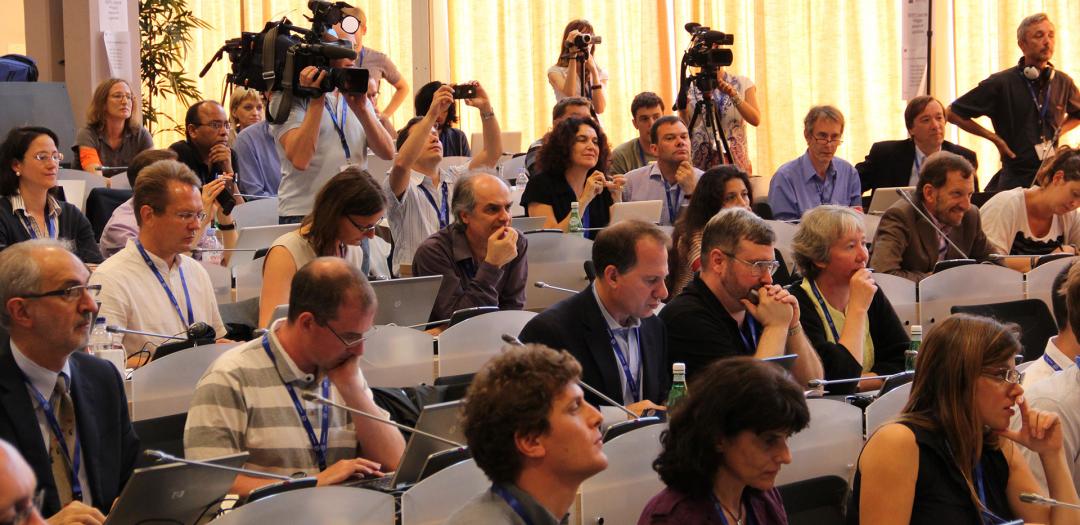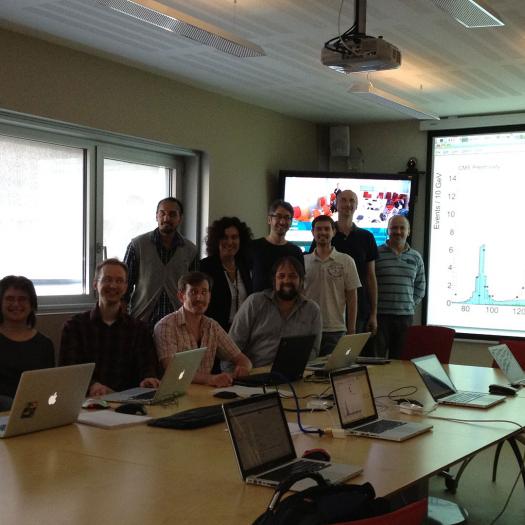Ten years ago, on 4 July 2012, an international collaboration of particle physicists announced to the world that they had independently observed a new particle – the Higgs boson. The finding came out of the ATLAS and CMS experiments at the Large Hadron Collider at CERN; Oxford researchers were key contributors to the discovery and have continued to play a leading role in Higgs-boson research ever since.
The long-awaited discovery came nearly 50 years after the boson was predicted by Peter Higgs and separately by François Englert and Robert Brout, in 1964. Their theory explained how particles acquired mass through interactions with the Higgs field and it became a key part of the Standard Model of Particle Physics – yet confirming the theory by finding the Higgs boson was beyond the reach of experiments at the time. After the W and Z bosons were discovered at CERN in 1983, and the top quark at Fermilab in 1995, the Higgs was the ‘missing piece’ in the Standard Model.
Tracking down the Higgs particle
The LHC began operation in 2008 and started colliding high-energy protons in 2010. The Higgs could be produced by various processes, but as it only lived for 10−22 seconds, the challenge was to identify its signature from the particles it decayed into, and to separate this signal from a background produced at a much larger rate. The experiments were equipped with huge arrays of detectors to map the particle tracks and measure their properties. The ATLAS semiconductor tracker (SCT) detector, assembled in Oxford by Professors Tony Weidberg, Richard Nickerson, Georg Viehhauser, Alan Barr and Todd Huffman, was essential to identify the electron and muon tracks produced by W boson decays. Professor Chris Hays and the Oxford group played a leading role in the search for the decays of a Higgs to W boson pairs. Meanwhile, on the other side of the 27km circumference LHC, two soon-to-be Oxford Professors, Daniela Bortoletto and Ian Shipsey, had played leading roles in building the CMS silicon pixel detector, which would prove crucial in the search for the Higgs; they also contributed prominently to the analysis of the data and to the internal review of the analysis results as the experiment prepared to go public.
The discovery of a new particle was announced on 4 July 2012. Physicists gathered in the auditorium at CERN, while those in Oxford, and around the world, avidly followed the livestream. ATLAS and CMS both presented their results. There was an excess of observed events showing a new particle with a mass of 125GeV, likely to be the Higgs Boson. Within weeks, the experiments published their observations in Physics Letters B, including the Oxford group’s contributions to an observed excess of W-boson pairs at ATLAS. A year later, the Nobel Prize in physics was awarded to François Englert and Peter Higgs.
Analysing the Higgs particle
During the ten years since, Oxford researchers have been busy analysing the growing volume of data to identify and measure the ways the Higgs boson can decay. In 2018, Oxford was involved in the first observation of the Higgs boson decaying to a pair of b-quarks. Since then, with growing data and due to intense work on developing measurement improvements, the Oxford researchers have been mapping out the Higgs boson in this decay channel with unprecedented precision. The Oxford researchers have also been tackling the search for the experimentally more challenging Higgs boson decay to c-quarks, the lighter cousin of the b-quark. Another breakthrough in the understanding of mass generation via the Higgs boson was in 2020 when the first evidence for the very rare process where a Higgs boson decays to two muons was announced. In addition to studying the different ways the Higgs boson decays, the Oxford researchers have made very precise measurements of the intrinsic properties, such as the mass, of the Higgs boson itself. The group are now using the Higgs boson to probe for new scientific phenomena and search for answers to mysteries like the nature of dark matter and the origin of the matter-antimatter asymmetry of the universe. The Higgs boson is a unique particle. It can interact with any particle with mass. Studying these interactions could be a key to further understand our universe.
A future of discoveries
While some of this work requires a PhD level understanding of particle physics, in 2014 Professor Alan Barr launched the Higgs Hunters project. The project gave more than 37,000 citizen scientists access to the ATLAS data allowing them to classify events for themselves on the Zooniverse platform. Following the completion of this project, Professor Barr is now leading a new project developing resources to let school students analyse small samples of ATLAS data and participate in research.
The LHC was shut down in 2018 in order to upgrade the accelerator and detectors. Following the break, it is now starting up for Run 3 which is scheduled to produce more data than Runs 1 and 2 combined – meaning the promise of more exciting discoveries ahead.
Join us to celebrate Higgs@10
To mark the discovery’s first decade, the Department of Physics is hosting a public event in person in the department Higgs@10: Ten years of the Higgs boson (registration required) and livestreamed to the Department of Physics YouTube channel.
Read all about it
Professor Gavin Salam FRS sees the Higgs boson turn ten in Nature
Professor Daniela Bortoletto discusses all things Higgs boson on Serious Science
The story of the Higgs boson is the topic of a new book by Professor Frank Close FRS: Elusive – How Peter Higgs solved the mystery of mass, to be released on 7 July.





